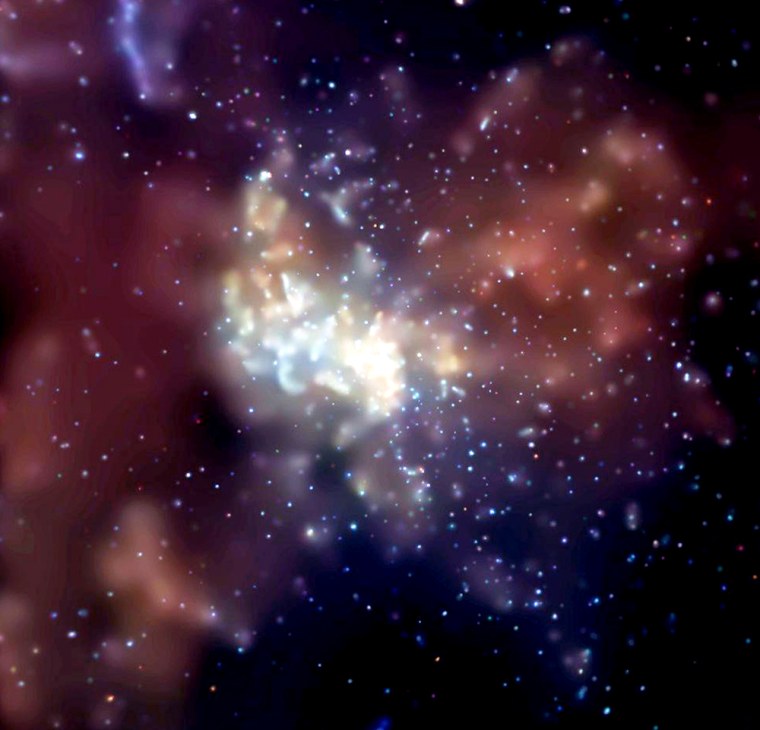The Milky Way might not have formed through the merger of several smaller galaxies as previously thought, but by some other unknown process, a new study suggests.
Home to our solar system and viewable in our own backyards, this crowd of stars called the Milky Way offers astronomers one of the best chances for understanding how a galaxy forms.
“The Milky Way is the only galaxy in the universe that we can study in detail. Still, we haven't yet understood how it did form," Manuela Zoccali of the Department of Astronomy and Astrophysics at the Pontifical Catholic University of Chile told SPACE.com. "Shedding light on its formation is fundamental to understand how all the galaxies in the universe have formed."
The Milky Way, often seen from Earth as a hazy halo of stars in the night sky, is a spiral galaxy with several arms of gas, dust and stars, coiling out from a spherical nucleus in the shape of a flattened disk. The starry center is called a bulge because it protrudes from the flattened disk.
Until now, the best theoretical models predicted dwarf galaxies beget larger and larger galaxies, as multiple star packs clumped together or a heftier galaxy started gobbling up its neighbors. If this were the case for the Milky Way, Zoccali said, the stars in the galactic bulge should have once been part of the disk. Over eons, as more galactic mergers occurred, some of the stars should be tugged toward the center to form the bulge.
“We have proved that this is not the case,” Zoccali said.
Using the European Southern Observatory’s Very Large Telescope (VLT) array in Paranal, Chile, an international team of astronomers, led by Zoccali, examined the chemical makeup of 50 giant stars in the direction of the galactic bulge. They discovered the stars at the center of the Milky Way showed distinct element amounts compared to the disk stars, a sign that the two galaxy components formed separately.
“In other words, bulge stars did not originate in the disk and then migrate inward to build up the bulge but rather formed independently of the disk,” Zoccali said.
They detailed their findings in the current issue of the journal Astronomy and Astrophysics.
Making stars
In essence, by cracking these chemical codes, the astronomers were able to peer back in time at the stars’ births.
Just before a star is born, its dusty neighborhood in space is swirling with interstellar matter. The chemical elements within the matter vary over time and location. So stars born from one batch of dust and gas would hold a different chemical make-up than stars born in another cosmic cloud.
The chemical codes also hold other clues. “What you’re really seeing when you look at these chemical fingerprints is a star formation rate, or a star formation history,” Verne Smith, at the University of Texas at El Paso, said in a telephone interview.
Two key chemical markers are oxygen and iron. Oxygen is predominantly produced during the explosion of massive, short-lived stars called Type II supernovae, while iron originates in the explosion of longer-lived stars called Type Ia supernovae. As these stars are blown to pieces, they spew their innards into interstellar space where it becomes the seeds for other stars.
Basically, if a star is loaded with oxygen with minimal iron the star may have developed at a lightning-fast rate, scientists explain.
Bulge forms fast
The astronomers found that the stars within the bulge contain more oxygen relative to iron than their counterparts out in the disk, where we reside.
By comparing the chemical compositions of the stars with computer models, the astronomers suggest the galactic bulge formed in less than a billion years, most likely as a result of a series of starbursts when the universe was young.
How did the independent star gangs hook up? “We astronomers really haven't figured out this part yet,” Zoccali said.
